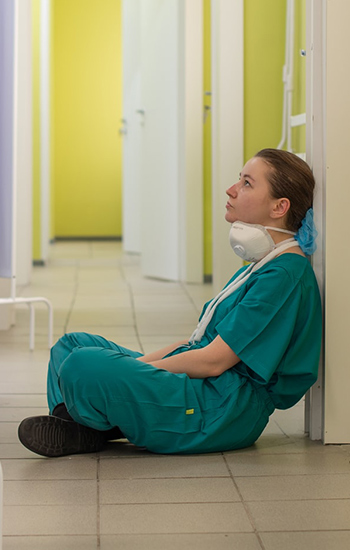HEALTHCARE
Listen to Golnaz Rakhshan, Wojciech Brus and John Kapov, Kasian healthcare experts, share Covid-19 best practices implemented during the design, construction and post-occupancy phases of healthcare design projects.
Creating a pandemic resilient hospital
The COVID‐19 pandemic has challenged the current state of healthcare facilities around the world in providing safe and effective care. These new emerging challenges have called upon architects, planners and healthcare professionals to rethink the current healthcare design trends of hospitals and to develop new innovative strategies which not only aim to create a pandemic resilient hospital, but also improve the quality of healthcare environments.
As the impact of COVID-19 on healthcare design will be felt for decades to come, “We feel it’s a very critical time for the future of healthcare design, and the more we share our knowledge, experience and expertise, and learn from each other’s practice areas – the better we will be at solving emerging problems and finding the right solutions for the pandemic and beyond,” says Golnaz Rakshan, Principal at Kasian.
In many instances, we have observed that the pandemic will accelerate three main trends already in the works prior to the crisis.
The delivery of healthcare services via digital technology
We know that virtual healthcare, or telemedicine, is here to stay. Virtual technology must be considered as an essential part of design, and a key factor in the creation of spaces that allow for a seamless transition from the physical to the digital realm.
Key design considerations:
– Impact on facility’s size
– Increasing isolation room capacity
– Limiting shared staff spaces
– Designing for the virtual, IT and infrastructural needs
– Re-imagining waiting rooms and public spaces
– Making the building intelligent through Smart and AI platforms
– Telemedicine hubs and dedicated telehealth consult rooms
– Incorporation of sensors and monitoring devices
– Considerations for on-site tele-triage
The need for infrastructural adaptiveness and flexible spaces
Flexibility is essential to future success of healthcare design. Physical, operational and technological flexibility and versatility should be key factors in design of healthcare spaces. In addition to meeting pandemic needs, the design must have the versatility to work for everyday use and non-infectious patient care. When designing healthcare spaces for flexibility.
Key design considerations:
– Continuity of operations and care of non-infectious patients during times of pandemic
– Multi-purpose and flex spaces with versatile use
– Designated surge spaces for testing, triage and care should incorporated necessary medical gas, telecommunication, and critical power to support the surge conditions
– Designated flex areas should be strategically located in ED and IPUs, and have the ability to switch between normal and pandemic modes
– Use of modular wall systems should be considered for patient treatment areas
– Portable dividers can be further used to create separation in public areas
– An infrastructure system that can be modified in the future while limiting the needs to shutdown specific areas
The increased importance and considerations for healthcare design
Design has the ability to promote healing. The pandemic has contributed to a tremendous amount of stress. The emotional impact has been felt by patients, nurses and healthcare practitioners. Design of healthcare spaces require creative ways to promote optimism by creating spaces for respite, wellbeing, companionship, and rapid recovery.
Key design considerations include:
– Access to the outdoors through creation of off stages spaces outdoors in each department for staff to escape emotionally charge healthcare environments, as access to green spaces, healing gardens and other natural environments have proven to have positive impacts on emotional well-being and increase productivity
– Other off stage, flexible areas that provide respite for staff and foster teamwork and coordination of care via proximity and visibility
– Other biophilic design considerations, such as the incorporation of green walls and natural light within interior spaces, and installation of nature-centric public artwork
– Integration of virtual technology and interaction to support both patients and staff
This presentation was originally given at a BC chapter meeting of CHES.
Read Next
Article
Nursing focused design: How do we heal the healers?
By: Ian Sinclair
Article
We’d love to get to know you
Get in touch
"*" indicates required fields
Get in touch
Share






